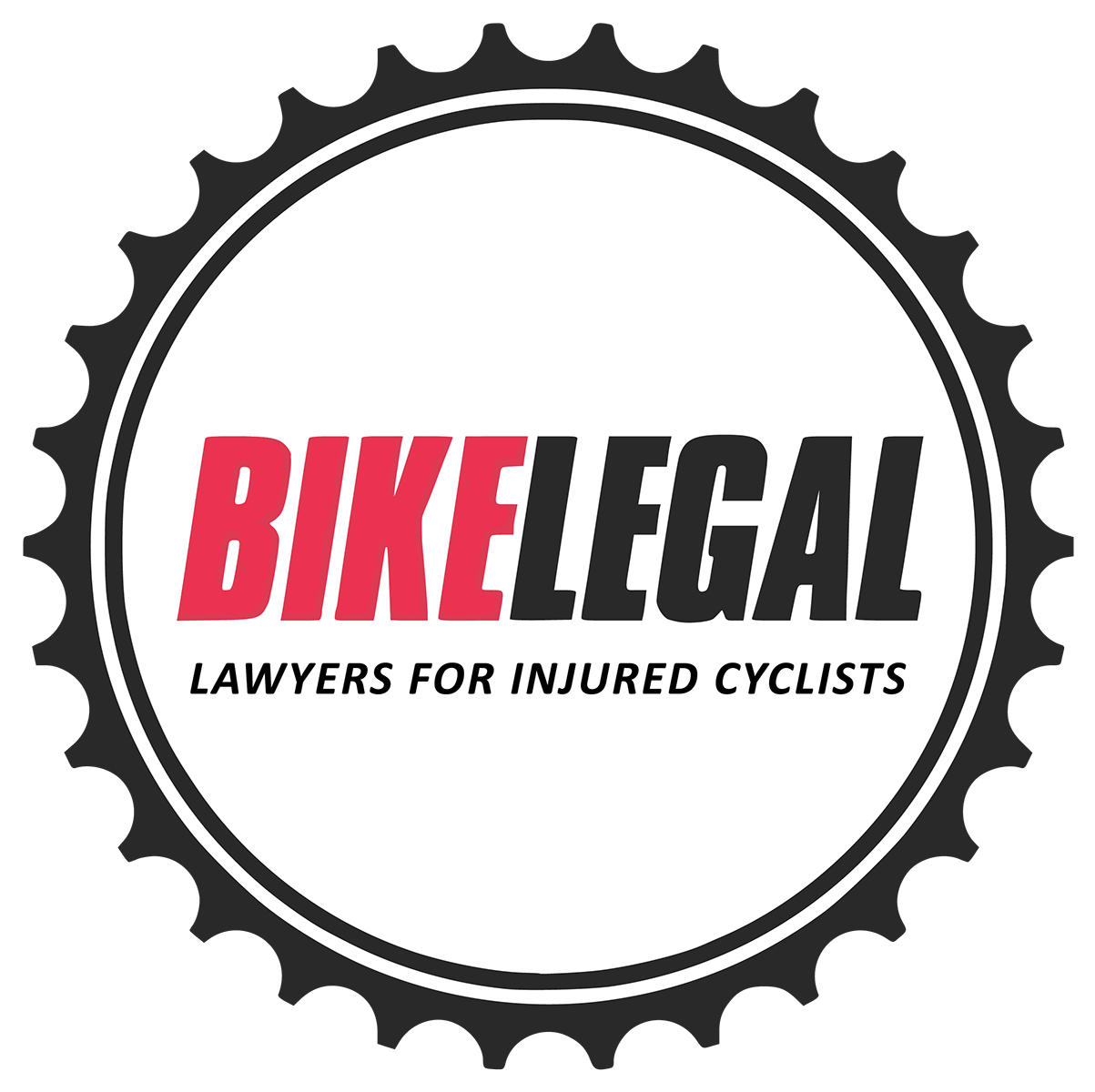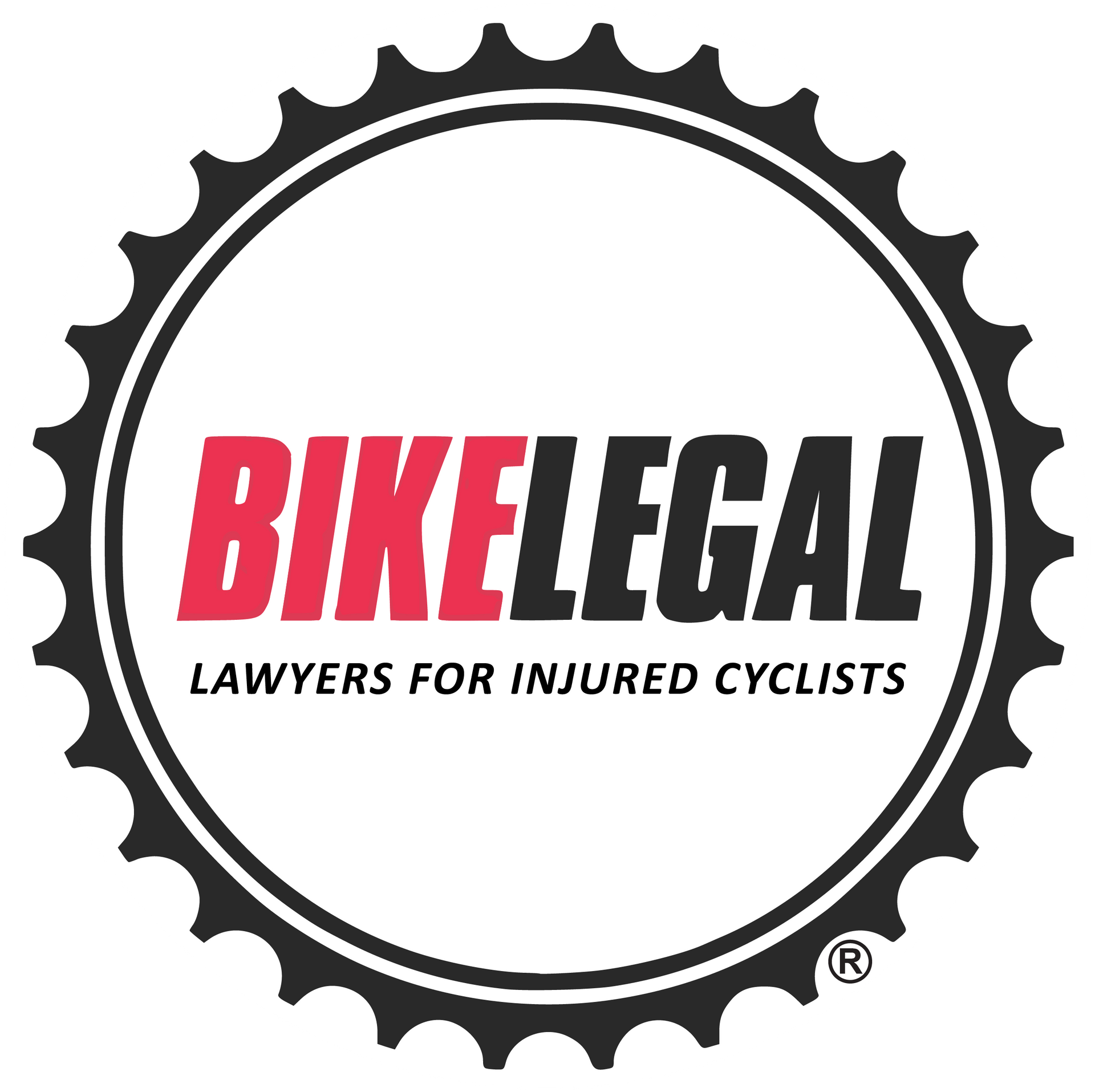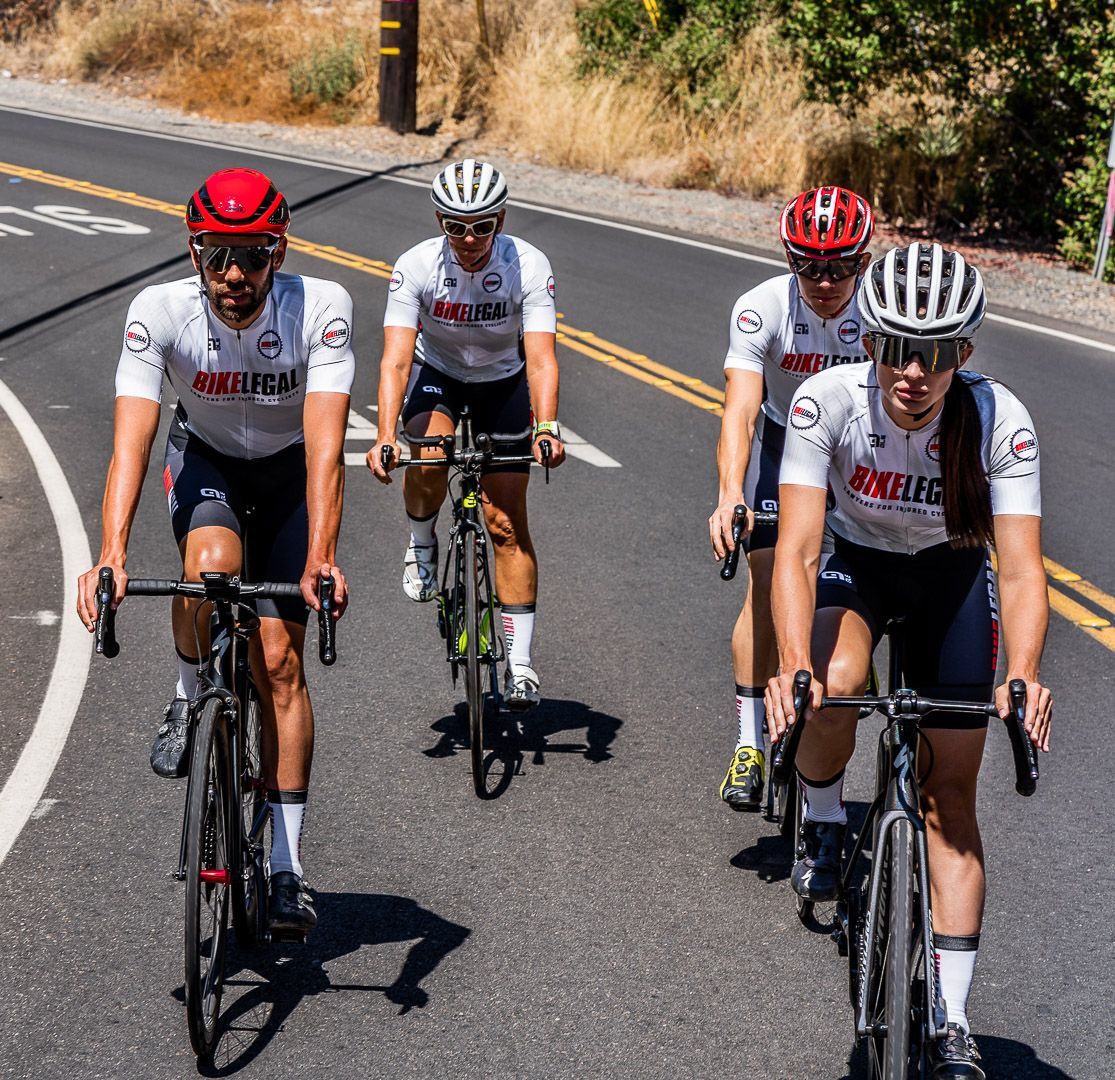The Challenges of Bicycle Safety in New York City
Follow us on
social media!
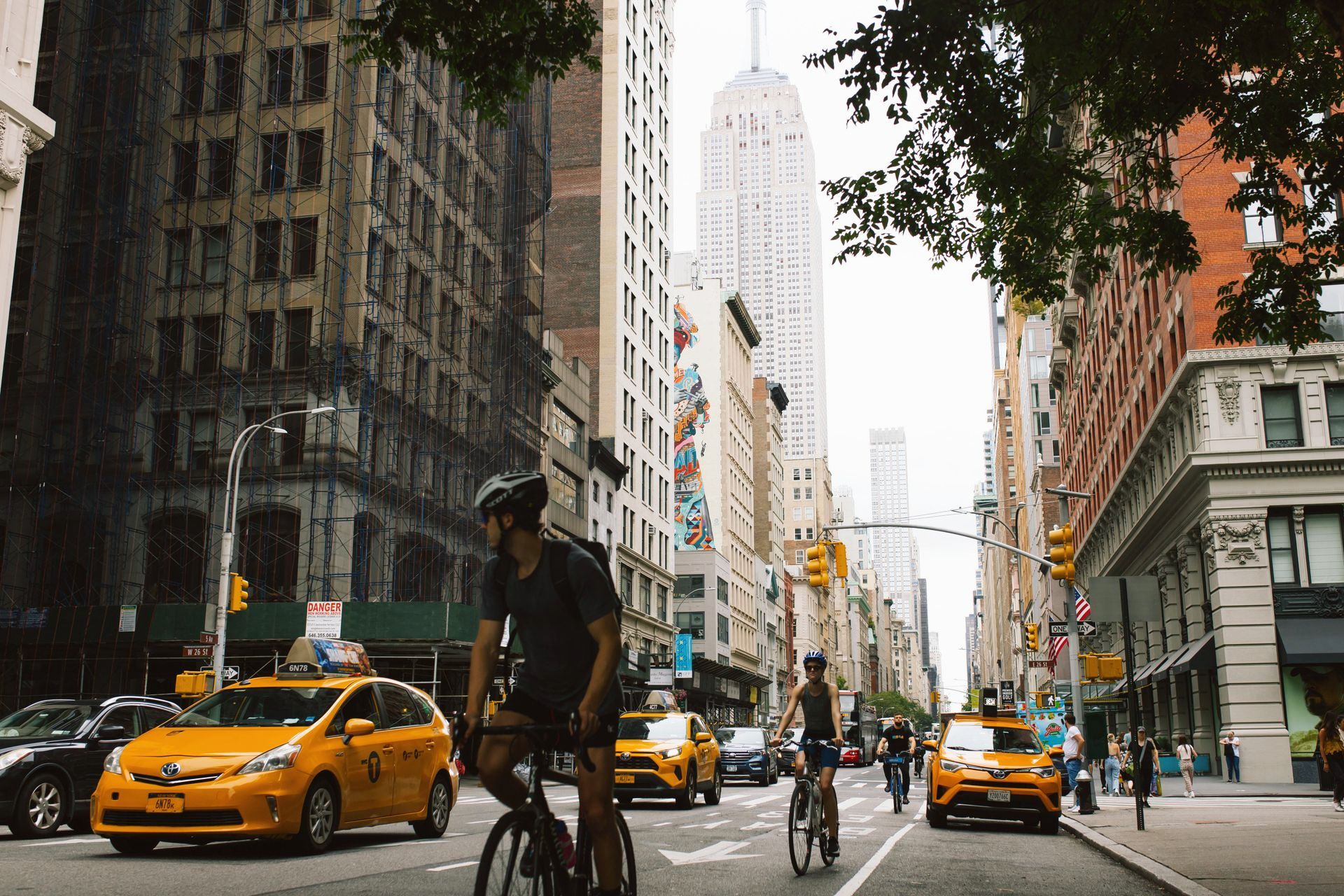
Why Infrastructure, Politics, and Culture May Be to Blame
The Big Apple is a bustling metropolis with an abundance of sights, sounds, and experiences to offer. One of the best ways to explore this vibrant city is on two wheels. It doesn’t matter if you are a seasoned cyclist, or recreational rider looking for a new way to experience the city, bicycle riding in New York City is a must-do. However, New York City faces several challenges when it comes to improving bicycle safety. This article provides firsthand bicycle riding experiences while exploring the challenges of bicycle safety due to infrastructure, politics, and culture.
The Central Park Carriage Horse vs. The Cyclist
Kyle Newman is a typical New York city bike rider who enjoys cycling for fitness and recreation. During the 2020 pandemic, he took the opportunity to escape the confines of his office in search of fresh air on his bicycle. He also taught his three-year-old child how to ride a bike during this time.
Kyle, like many other recreational cyclists in New York City, chooses Central Park as his venue for riding due to its scenic views and varied terrain. The park is open to runners, walkers, skaters, and horse-drawn carriages who share the scenic drives.
One day, while Kyle was riding, he passed
one of the usual horse carriages that transport tourists and couples throughout the park. Suddenly, one of the horses became spooked and abruptly lurched to the left, directly into Kyle’s path. Kyle had to quickly maneuver his bike and skid sideways on both tires to narrowly avoid being trampled by the draft horse. “It could have been a total disaster,” remembers Kyle, who is a New York City bicycle accident attorney, referral attorney for Bike Legal, and founder of Uptown Injury Law located in the Bronx.
As a cyclist in a congested city like New York, there are countless hazards one would expect to encounter. Being trampled by a horse is not typically one of them. However, this incident highlights the diverse range of activities, modes of transportation, and potential conflicts that cyclists may encounter. Although being trampled by a horse is not a common hazard for bicyclists in NYC, the city has a long and troubled history of traffic accidents involving cyclists.
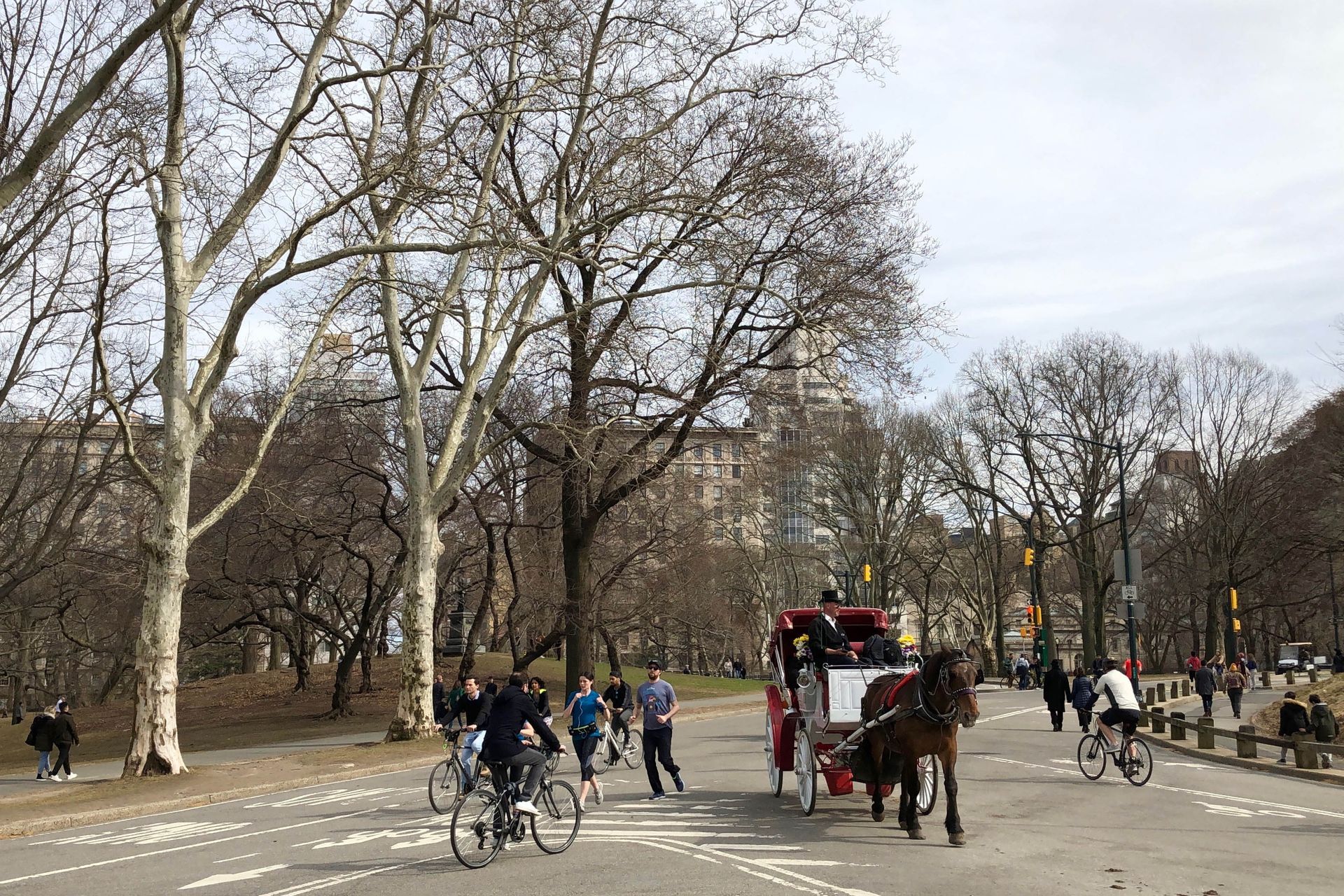
Learn more about Kyle Newman who is a referral attorney for Bike Legal
Visit Central Park Conservancy to learn about riding in Central Park
Is New York City Too Dangerous For Cyclists?
In 2021, New York City had nearly 5,000 bicycle accidents that involved a bicycle injury. All but 270 of those were the result of a collision with a motor vehicle. Additionally, there were 19 bicycle fatalities as a result of bicycle accidents, according to NYC Department of Transportation 2021 statistics.
These numbers are down from a Covid year high in 2020 of over 5,500 bicycle accidents that resulted in injury and 26 fatalities, according to the
2020 statistics.
Nevertheless, these current numbers are higher than in 2014, which was when NYC began to implement its Vision Zero Task Force, a multidisciplinary coordinating body that combines a systems approach, data collection and analysis, and a collaborative effort to reduce traffic fatalities.
“As a New York personal injury lawyer, I’ve seen first-hand how devastating bicycle accidents can be for riders and their families,” says Kyle. “Regardless of the force of the impact, the consequence of a bicycle accident with a motor vehicle poses a significant risk of serious harm that can destroy someone’s life instantly”.
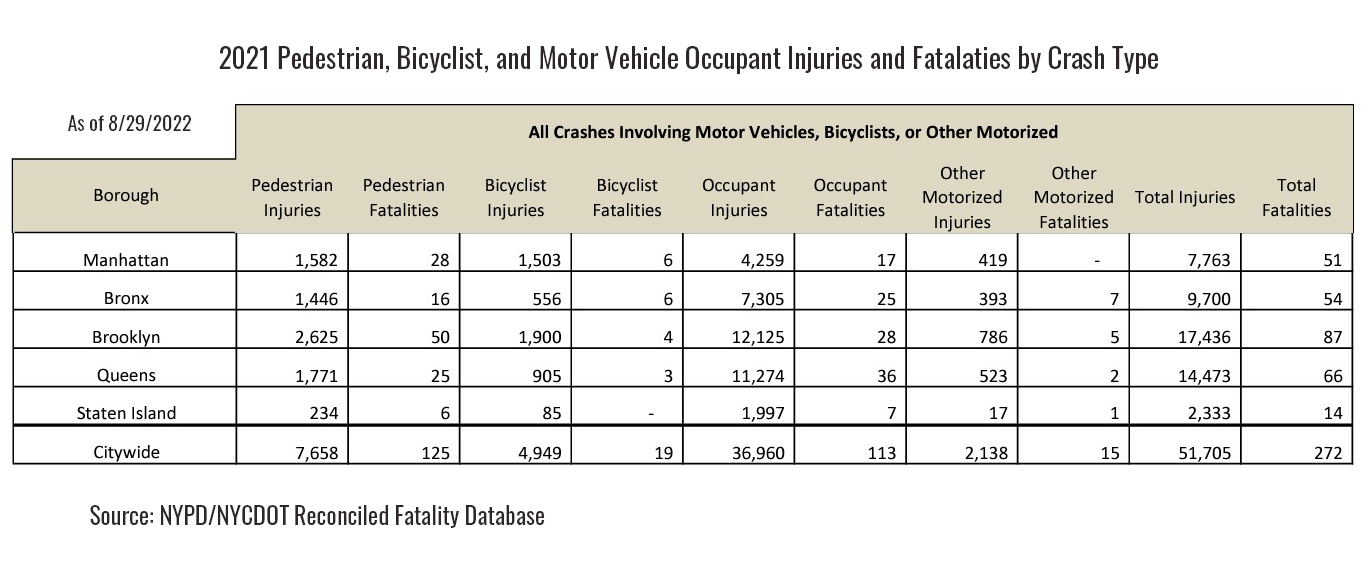
Vision Zero
First implemented in Sweden in 1990, the Vision Zero traffic safety initiative has since been adopted in other cities worldwide. At the time it was a radical departure from traditional policy. Rather than view traffic fatalities as an inevitable tradeoff between transportation requirements and pedestrian and bicycle safety, Vision Zero operates on the core principle that no loss of life due to traffic accidents is acceptable.
It no longer assumed that bicycle safety was a product of individual mistakes. Instead, it accepted that mistakes are inevitable - even predictable - and that pedestrian and bicycle safety policy should include systems and initiatives that factor in human fallibility. Projects that create car-free zones, dedicated bicycle lanes, and pedestrian-only boardwalks are some of the projects that are central to Vision Zero.
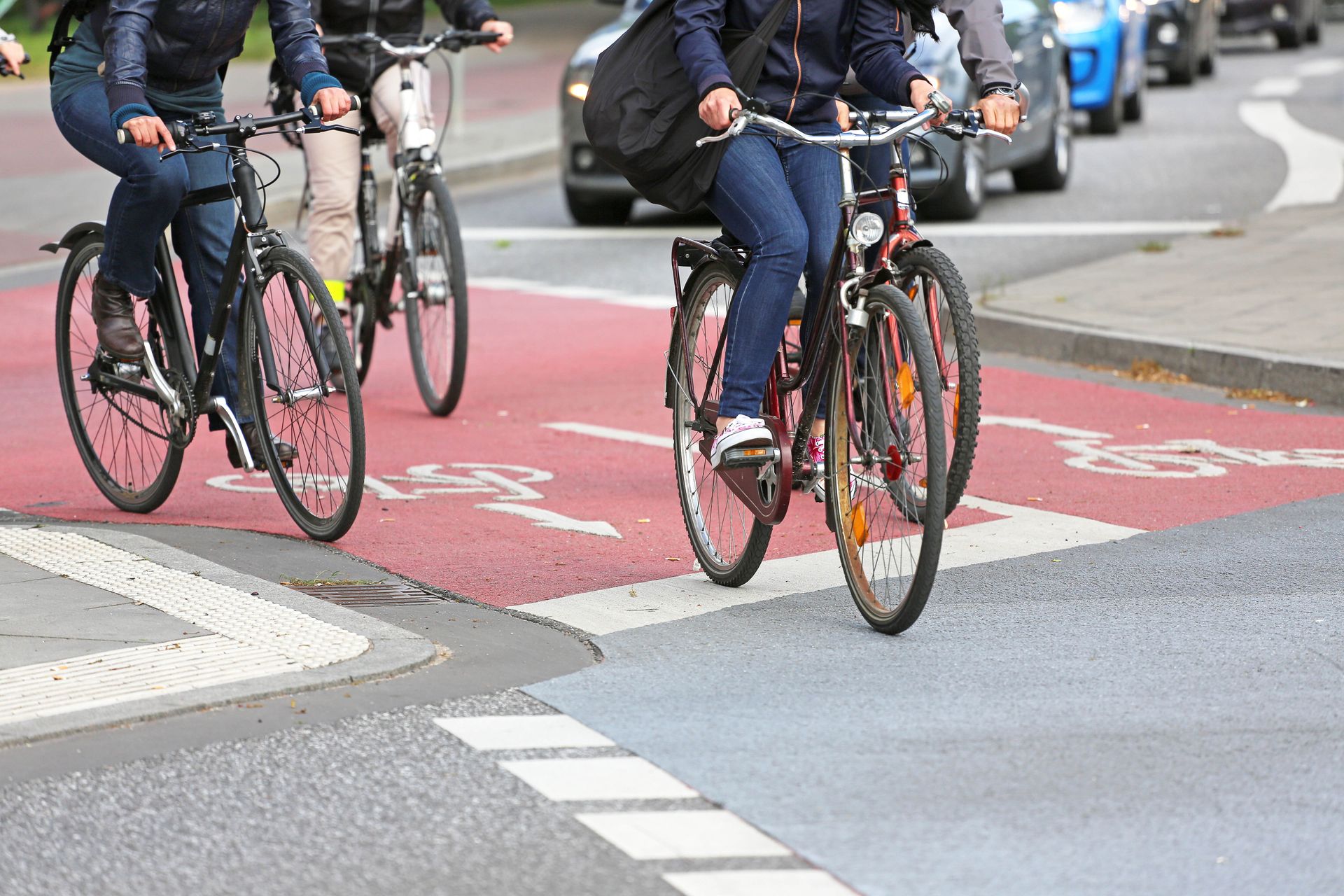
In many cities, Vision Zero has been a fantastic success. Oslo, Norway achieved its Vision Zero goal in 2019 with zero bicycle fatalities and zero pedestrian fatalities. This is a significant decrease from a high of 41 fatalities in 1975, according to Streetsblog and Aftenposten. This was achieved through a mix of reduced speed limits, creating car-free zones, and reducing traffic and speeds around schools. There was some initial pushback against some of the measures, but it is now considered a model for other cities.
In 2014 the New York City Department of Transportation implemented its Vision Zero Task Force. However, a cyclist in NYC is still 25 times more likely to be killed than a cyclist in Vancouver. This statistic from the International Transport Forum doesn’t tell the whole story. In fact, NYC has reduced cycling deaths and serious cycling injuries even though the number of cycling miles has increased. Kudos to NYC for its progress, but there is still much more work that needs to be done to mirror the success of cities such as Oslo, Vancouver, or Warsaw in terms of bicycle safety.
To view the latest traffic crash and fatality statistics from the New York City DOT in conjunction with the NYPD visit
Vision Zero VIEW.
NYC DOT Creates an Actionable Plan to Protect New York Cyclists
Queens Boulevard is one of the widest and busiest streets in New York City. 18 pedestrians died on Queens Boulevard in 1997 alone. In 2014 NYC DOT began redesigning the street as a
Vision Zero Great Street, adding pedestrian islands, protected bike lanes, extended medians, and widened crosswalks.
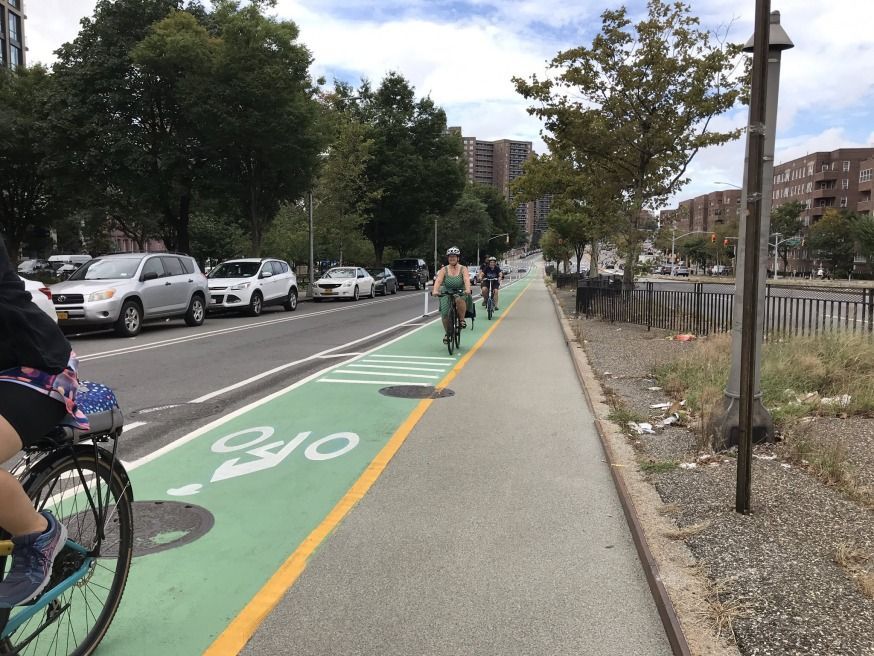
As a result, Queens Boulevard saw zero pedestrian fatalities between 2014-2017. Additionally,
NYC DOT is installing concrete barriers to further protect cyclists. The Three Queens and four Manhattan protected bike lanes are the first lanes in the program.
Yet Queens Boulevard is still only one in a city of hundreds if not thousands of busy streets. Making wholesale changes city-wide in the interest of bicycle safety conflicts with the limitations of a 200-year-old narrow grid system, competing interests, and a dense population in a limited space.
Kyle Newman experiences it all firsthand, “There is no continuity. There are potholes. The bike lanes are a joke, are broken up or end abruptly, all of which force cyclists to maneuver back into traffic. The bicycle safety infrastructure is tough. It can be very treacherous,” he says, and just the mere act of getting around the city or out of the city requires dodging taxis, trucks, and pedestrians.”
New York City is Home to Many Types of Bicyclists
- Bike Messenger and Delivery
- Commuter
- Recreational and Competitive
- Citi-bike Ride Share
NYC Bike Messenger and Delivery Service
NYC has a very long, celebrated - and sometimes notorious - bicycle messenger and delivery culture that has been popularized by movies such as Quicksilver and Premium Rush. U.S. Olympic track cyclist Nelson Vails, who is still a cult figure in cycling circles, famously got his cycling start as a NYC bike messenger.
For small businesses to survive in the densely populated boroughs of NYC, they require regular deliveries of goods provided by both large panel trucks and via bicycle delivery method. Bicycle deliveries share the same roads and service the same businesses as large commercial and delivery vehicles. Unfortunately, closing a traffic lane to add additional or wider bike lanes is not always an option.
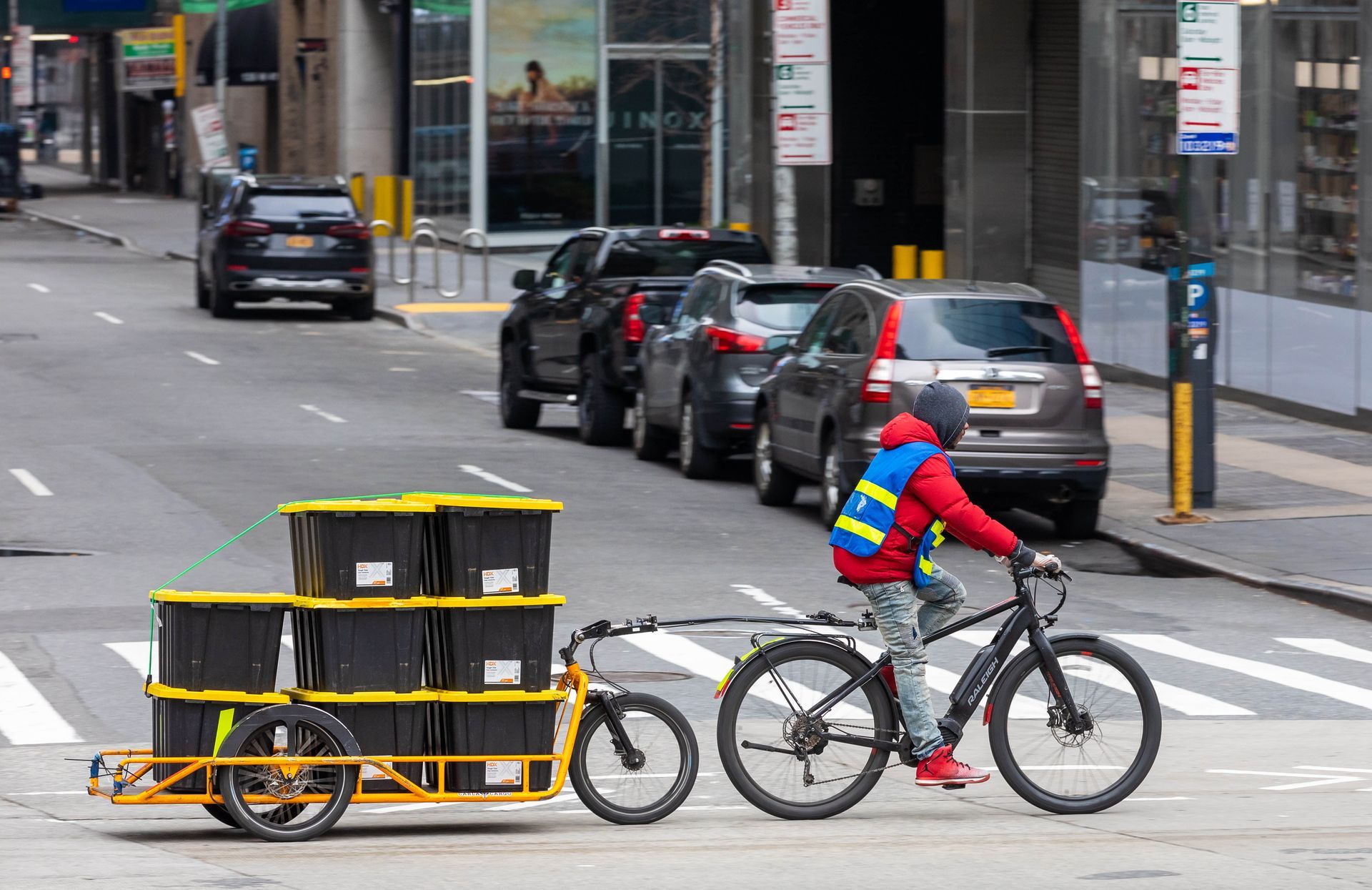
Queens and the Bronx have the highest bicycle fatality rates among the boroughs. In these congested streets, where cars and trucks are often backed up, bicycle delivery has evolved as an essential part of the economy. "Many of the people who rely on bicycle delivery as a primary means of income are typically immigrants from South or Central America", says Kyle.
The deadliest bicycle collisions are with large panel trucks and delivery vehicles. According to
Bicycling Magazine, Commercial trucks, and vans were responsible for fewer than 3% of the total bicycle collisions with motor vehicles but killed the most by a significant margin.
NYC Bicycle Commuters
Commuting to work via bicycle in New York City has increased 5x faster than its peer city average (2014-2019). In 2019, 52,696 New Yorkers rode a bike to work, which is about a 26% increase from 2014, according to
NYCDOT.
There are a couple of notable factors that contribute to this growth. One is the Citi Bike ride-share program which provides thousands of bicycles throughout the city. The other is New York City’s DOT continued efforts to improve bike lanes and bicycle safety. Today, the trend of increased commuters continues with New Yorkers swapping the crowded subways and buses for walking or cycling instead.
The Recreational and Competitive Cyclists
The majority of bicycle riders in New York City fall into the category of recreational cyclists, both who train seriously for competition like Brian, and those who ride for fitness and fun like Kyle. What all these riders have in common is the need for a safe place in New York City to ride their bike.
Brian is a long-time cyclist and triathlete who has years of experience riding in NYC. Negotiating the ordered chaos of the city presents its own unique challenges to a cycling enthusiast. For Brian, accepting the reality of shared space in a densely packed metropolis requires some compromises.
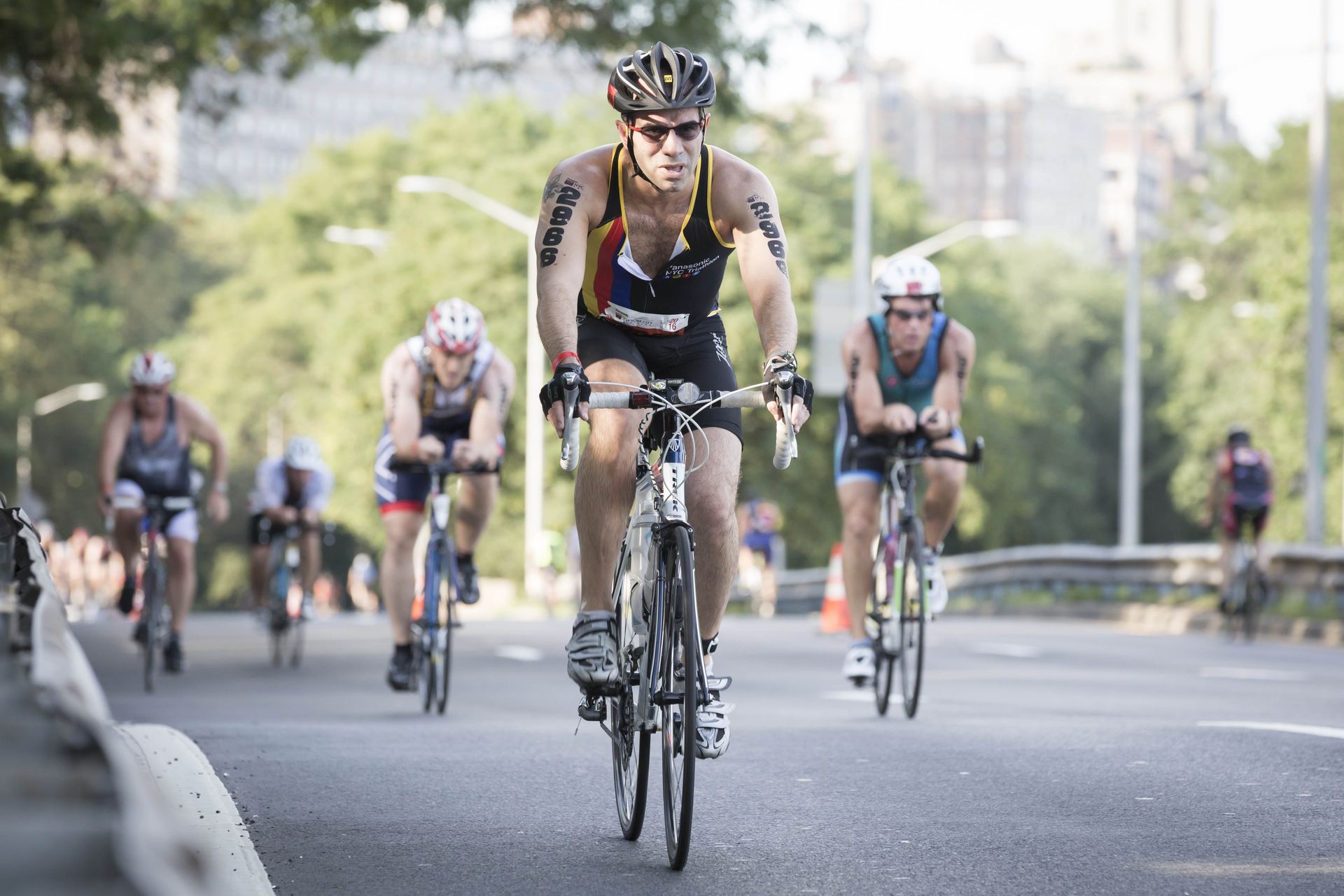
For example, standard equipment for every serious road cyclist is clipless pedals. They are a lot like ski bindings. These pedals firmly attach the rider’s foot to the pedal, which increases pedaling efficiency and power. The disadvantage is that they aren’t easy to quickly clip out of in an emergency. For Brian, when riding in the city on his road racing bike he keeps one foot unclipped as a matter of practice.
Anything or anybody could walk out in front of you at any time. “If you’re not paying 100% attention, you’re just asking for trouble,” he says. Riding in the city means riding defensively all the time. For Brian and other serious cyclists to be able to train effectively, requires crossing over the George Washington Bridge into New Jersey. From there they will typically ride along the 9 West or the Hudson River.
Living in the Big Apple has tremendous value due to its unique culture, diversity, and unparalleled energy. However, some trade-offs and compromises are required when living in a limited space with 8.5 million other people. Brian and other New York cyclists accept these challenges and learn to adapt to them.
Citi Bike - New York City's Bike Share Program
Aside from being a competitive bicycle rider, Brian has also enthusiastically embraced the Citi Bike bike-share program.
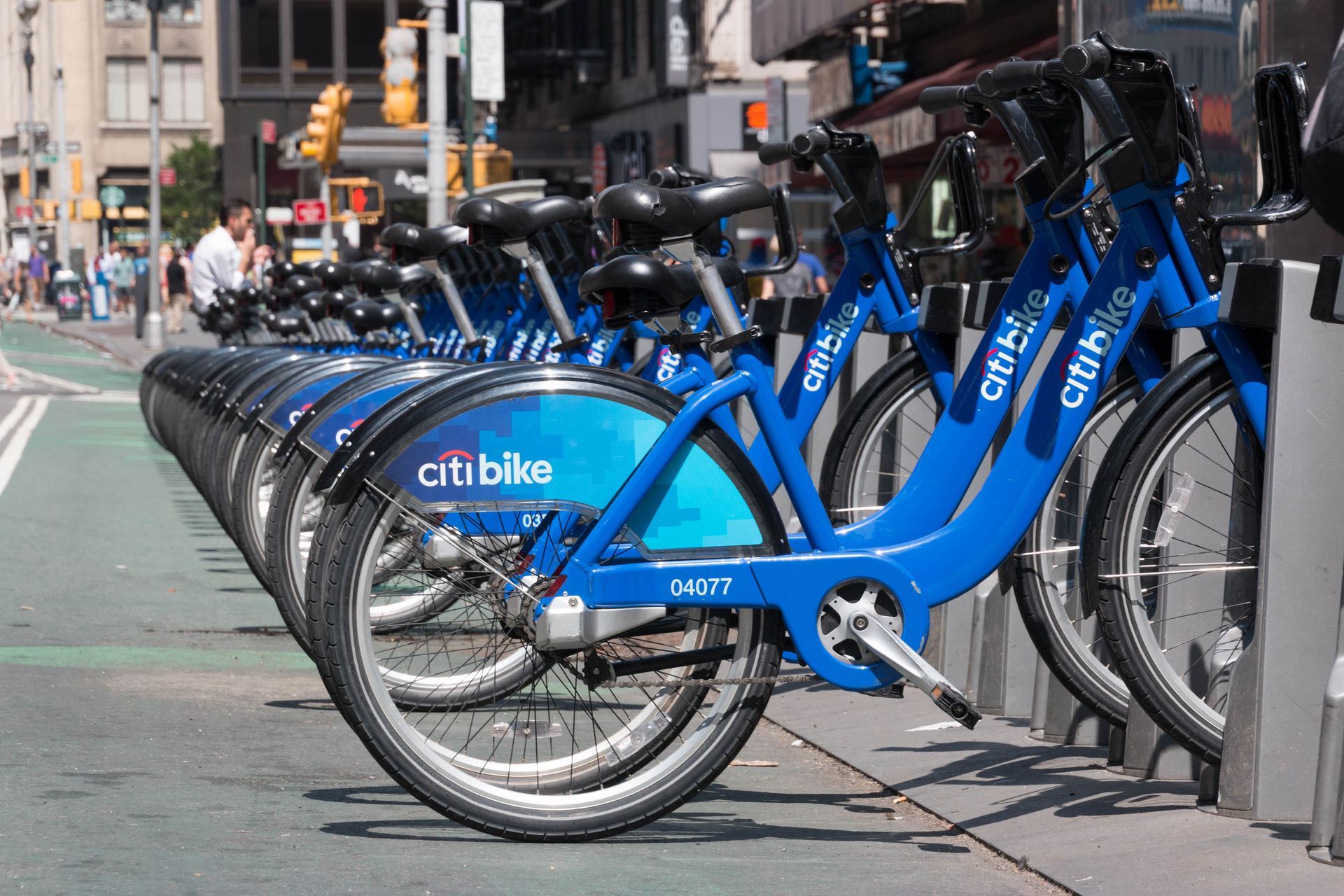
To learn more about NYC Citi Bike Ride Share Program visit Citi bike NYC
Launched in 2013, it is the largest bicycle ride-share program in the country and is a big driver of the increased number of total bicycle riders within the city. Currently, there are 27,000 bikes and over 1,700 stations across Manhattan, Brooklyn, Queens, the Bronx, Jersey City, and Hoboken.
The benefits of Citi bike vs. standard forms of transportation are:
- Save Time- Often faster than other forms of transportation
- Cost Savings- Over expensive taxis and subway passes
- Enjoy the Outdoors- Fresh air and scenery are great even in the city
- Exercise- Even pedaling short distances has health benefits
- Go Green- Save on gas while keeping pollutants out of the air
The Challenges of Bicycle Safety in NYC are Deeply Rooted
Perhaps the unspoken but easily recognized contributor to bicycle accidents and the ongoing challenge with bicycle safety is the innate character of NYC- Its Personality. There is a stereotype of New York, with its chaos of car horns, angry gestures, yelling pedestrians, and bicycle messengers weaving precariously in and out of traffic. A city, with a certain amount of assertiveness baked into its personality where yielding an inch, is a surefire way to find yourself at the back of the line. However, this unique character is part of NYC’s charm and attracts people from all over the world.
The nature of the motor vehicle and bicycle coexistence is based a great deal on the act of yielding, whether space on the road, a lane, or a parking spot. Other cities, such as Oslo and Vancouver, are known for their polite and accommodating cultures, which make it easier to implement policies that encourage sharing the road and creating a safer environment for bicyclists.
It is a combination of many factors inherent to New York City that will continue to create challenges with implementing a Vision Zero goal and reducing bicycling accidents and bicycle injuries. Despite these challenges, the city and DOT have made significant efforts to improve bicycle safety in recent years. This includes the creation of more protected bike lanes and infrastructure. We shouldn’t lose sight of the fact that bicycle safety in NYC has improved over the last decade. However, there is still much work to be done to make New York City a safer and more accessible place for bicyclists.
At Bike Legal our mission is to advocate for cyclists’ rights and bicycle safety. Our legal team is committed to supporting and representing cyclists across the United States no matter where you ride or how you ride. Visit us at www.bikelegalfirm.com
Additional Resources for Bicycle Riding in New York City
If you or someone you know
has been involved in a bicycle accident,
Bike Legal is here to help!
Visit: www.bikelegalfirm.com
or call 877-BIKE LEGAL (877-245-3534)
